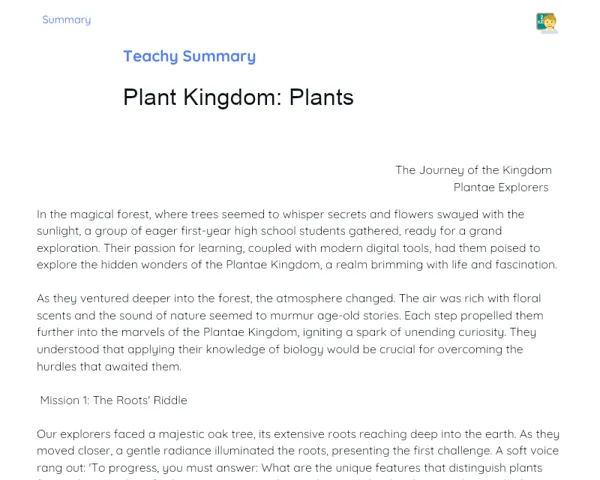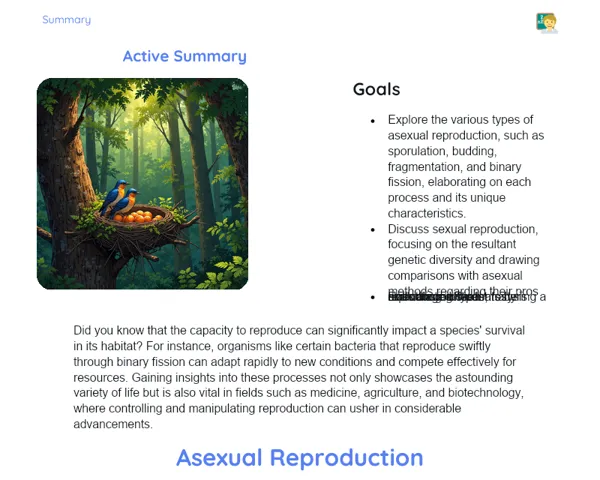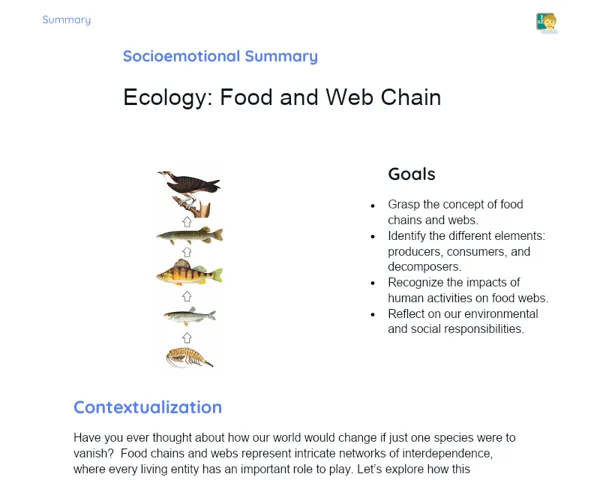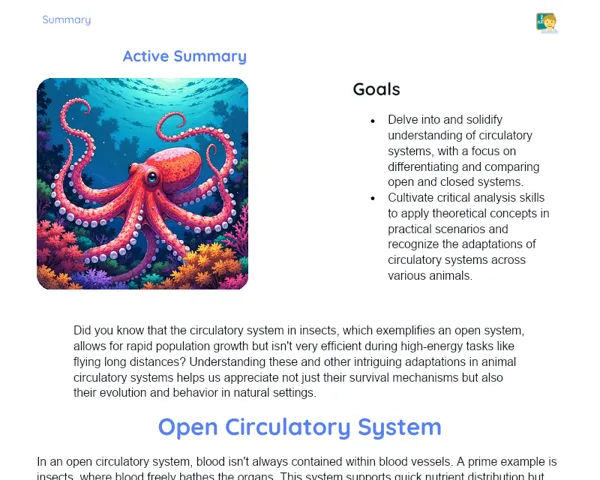Socioemotional Summary Conclusion
Goals
1. Understand that the tissues of the human body are integral components of various systems.
2. Learn about the main cell types that form human tissues.
3. Recognize the role of tissues in maintaining the proper functioning of our body.
Contextualization
Did you know that our skin, which is the largest organ in our body, not only acts as a shield against infections but also helps in regulating our body temperature? Knowing how different tissues operate and interact enables us to make better choices for our health. Let’s dive into these fascinating aspects of biology together and discover how we can take better care of ourselves!
Exercising Your Knowledge
Epithelial Tissue
Epithelial tissue lines all the external and internal surfaces of our body, acting as a protective barrier. It also forms glands and is involved in processes like absorption, secretion, and excretion. Think of it as the 'skin' that not only covers the outer body but also lines the inner organs and cavities.
-
Protection: Its primary role is to protect the body from physical, chemical, and biological harm.
-
Absorption and Secretion: This tissue facilitates the absorption of nutrients and the secretion of substances such as enzymes and hormones.
-
Regeneration: Epithelial cells have a high capacity for regeneration, which is crucial for healing wounds.
Connective Tissue
Connective tissue binds, supports, and gives structure to the body's tissues and organs. It not only provides physical support but also assists in protection and nourishment. This category includes bone, cartilage, fat, and blood, each performing essential roles in keeping our body functioning properly.
-
Structural Support: Offers essential support and structure to organs and various parts of the body.
-
Storage: Acts as a reservoir for fat (an important energy source) and stores minerals like calcium in the bones.
-
Transport: Blood, which is a type of connective tissue, is responsible for transporting nutrients, oxygen, and waste products throughout the body.
Muscle Tissue
Muscle tissue is vital for movement, whether these movements are voluntary or involuntary. It is made up of muscle fibres that contract and relax to produce motion. There are three main types: skeletal, cardiac, and smooth muscles, each serving distinct functions.
-
Voluntary Movement: Skeletal muscles facilitate voluntary actions such as walking and running.
-
Involuntary Movement: Smooth muscles manage involuntary movements in organs like the stomach and intestines.
-
Heart: Cardiac muscle drives the contractions that pump blood through our body.
Nervous Tissue
Nervous tissue is the key player in transmitting electrical impulses that allow communication between different parts of the body, coordinating its multiple activities. It is mainly composed of neurons, which relay signals, and glial cells, which support and protect these neurons.
-
Impulse Transmission: Neurons send electrical signals crucial for coordinating body functions.
-
Neural Support: Glial cells act as the caretakers by protecting and nourishing neurons.
-
Perception and Response: This tissue helps the body perceive environmental stimuli and respond appropriately.
Key Terms
-
Epithelial Tissue: Tissue that covers surfaces and forms glands.
-
Connective Tissue: Tissue that connects and supports other tissues and organs.
-
Muscle Tissue: Tissue responsible for body movement.
-
Nervous Tissue: Tissue that transmits electrical impulses in the body.
For Reflection
-
How can an understanding of different tissues of the human body help you make healthier choices in your daily life?
-
What feelings did you experience while working in groups to explore a specific type of tissue? In what way do those feelings influence your learning and relationships with your peers?
-
How can you apply the emotional regulation strategies learned in this lesson to other areas of your life?
Important Conclusions
-
The tissues of the human body are essential for the proper functioning of various bodily systems, each playing a specific and vital role.
-
By understanding the different types of tissues and their functions, we empower ourselves to make informed decisions about our health and well-being.
-
Group activities not only reinforced theoretical knowledge but also helped in developing key social skills like communication and teamwork.
Impacts on Society
In our everyday lives, grasping the concept of human tissues helps us appreciate our health and make better lifestyle choices, like maintaining a balanced diet and incorporating regular physical activity. This understanding leads to a healthier and more active life. It also offers insight into the intricate workings of the human body, promoting greater self-awareness and self-care. Moreover, such knowledge can encourage aspiring health professionals to enhance the quality of life for others. Recognising the importance of each tissue not only nurtures empathy and respect for individual differences but also supports the celebration of biological diversity, fostering a more inclusive and healthy society.
Dealing with Emotions
To manage your emotions while studying, I suggest keeping an emotional diary. Start by recognising the feelings you experience while reviewing the content on human tissues. Note down in a dedicated notebook how you feel and try to understand the reasons behind these emotions. For example, if you feel anxious, question why that might be. Express your emotions by writing them down or discussing them with a trusted friend or family member. Additionally, techniques such as deep breathing or taking short breaks during study sessions can help in maintaining calm and focus.
Study Tips
-
Create mind maps that summarise the different types of tissues, highlighting their unique characteristics and functions. This visual approach can aid in better memorisation and understanding.
-
Design a study schedule with regular intervals for review, complemented by breaks and some physical activity, to keep your mind fresh and balanced.
-
Explore multimedia resources like educational videos and animations on human tissues. These tools can make the learning process more dynamic and engaging by helping you visualise the structure and function of each tissue.



